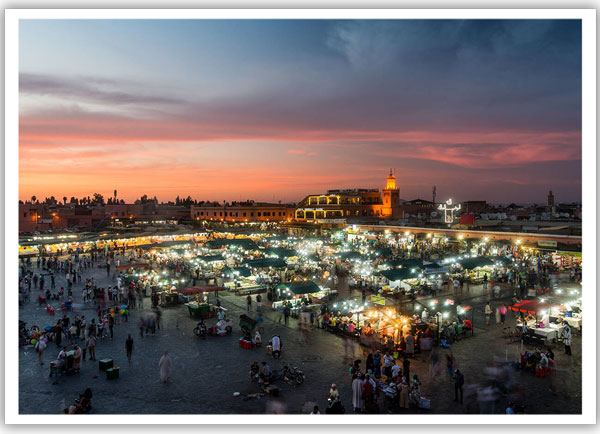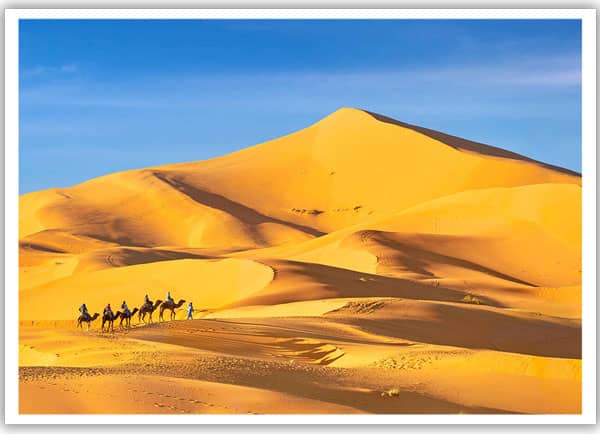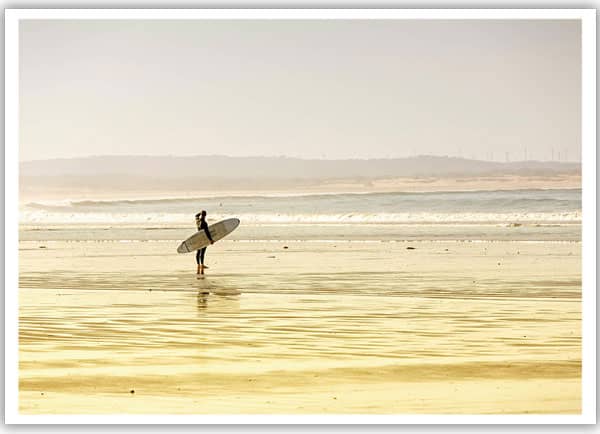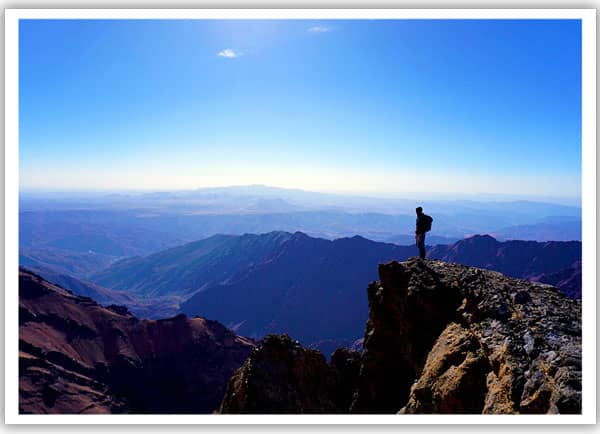The Best Time to Visit Morocco by Season and Activity
Introduction
Morocco is a land of stunning contrasts from the golden sands of the Sahara Desert to the snowy peaks of the Atlas Mountains, and from bustling ancient medinas to laid-back beach towns along the Atlantic and Mediterranean coasts. Because of this diverse geography, Morocco experiences a variety of climates throughout the year, making the timing of your visit an important factor to consider.
Whether you’re dreaming of exploring vibrant cities, trekking through mountain trails, relaxing on sunny beaches, or embarking on a desert adventure, the best time to visit Morocco depends largely on what you want to do and see. In this guide, we’ll break down Morocco’s seasons and highlight the ideal times for different activities, helping you plan a trip that suits your interests and guarantees the best experience.
Overview of Morocco’s Seasons
Morocco’s climate varies widely depending on the region, but it generally follows four distinct seasons, each bringing unique experiences for travelers:
1. Spring (March to May)
Spring is one of the best times to visit Morocco. The weather is mild and pleasant, with blooming flowers and lush landscapes, especially in the northern and mountainous regions. Temperatures range from comfortable lows in the 50s°F (10-15°C) to highs in the 70s and 80s°F (20-30°C), making outdoor activities and city exploration enjoyable.
2. Summer (June to August)
Summers in Morocco can be very hot, particularly in inland cities like Marrakech and Fes, where temperatures often soar above 100°F (38°C). Coastal areas and the Atlas Mountains offer cooler retreats, but the desert regions experience extreme heat. This season is perfect for beachgoers and those seeking cooler mountain air but can be challenging for sightseeing in the cities or desert.
3. Autumn (September to November)
Autumn is another excellent season to visit, with gradually cooling temperatures and less tourist crowds. Days are warm, but evenings start to cool, especially in the mountains. It’s a great time for outdoor adventures, city tours, and enjoying Morocco’s natural beauty without the summer heat.
4. Winter (December to February)
Winters can be mild along the coast and in cities like Casablanca and Rabat, with temperatures averaging between 50-65°F (10-18°C). However, the Atlas Mountains experience snow and cold weather, attracting winter sports enthusiasts. Desert nights can be very cold, so proper clothing is essential.
Best Time to Visit for Popular Activities
Morocco offers a wide range of activities, each best enjoyed during certain seasons. Here’s a detailed breakdown to help you plan the perfect timing based on your interests:
1. Exploring Cities and Cultural Sites
The imperial cities of Marrakech, Fes, Meknes, and Rabat are cultural jewels filled with historic palaces, bustling medinas, and vibrant souks. The best time to visit these cities is during spring (March to May) and autumn (September to November) when the weather is mild and comfortable for walking and sightseeing. Temperatures during these months typically range from the mid-60s to mid-80s°F (18-30°C), ideal for exploring outdoor sites without the oppressive heat of summer.
Summer can be extremely hot, especially in Marrakech and Fes, where midday temperatures often climb above 100°F (38°C), making sightseeing less pleasant. Winter is cooler but still manageable, though some days may be rainy.

2. Desert Adventures
The Sahara Desert is one of Morocco’s most iconic destinations, offering camel treks, 4×4 tours, and nights under the stars in traditional Berber tents. The best months for desert visits are spring (March to May) and autumn (September to November), when daytime temperatures are warm but not scorching, usually between 70-85°F (20-30°C).
Summer months can be dangerously hot, with daytime temperatures soaring above 110°F (43°C), making desert activities challenging and potentially unsafe during the day. If you visit in winter, be prepared for cold nights that can drop below freezing, so pack warm clothing.

3. Beach and Coastal Activities
Morocco’s Atlantic and Mediterranean coastlines offer fantastic opportunities for surfing, swimming, and relaxing by the sea. The best time for beach activities is late spring through early autumn (May to September), when the weather is sunny and warm.
The Atlantic coast, including popular spots like Essaouira, Agadir, and Taghazout, tends to have moderate temperatures and great surf year-round, but summer offers the warmest waters and liveliest beach atmosphere. The Mediterranean coast near Al Hoceima and Nador is warmer and sunnier in summer, perfect for sunbathing and swimming.
Winter months are cooler and less ideal for beach activities, but some hardy surfers still enjoy the waves.

4. Hiking and Mountain Activities
Morocco’s Atlas and Rif Mountains are paradise for hikers, trekkers, and nature lovers. The optimal seasons for hiking are spring (March to May) and autumn (September to November), when trails are accessible, and temperatures are comfortable.
Spring offers blooming wildflowers and lush valleys, while autumn provides crisp air and beautiful fall colors. Summer can be too hot for hiking, especially at lower elevations, while winter brings snow and icy conditions in the mountains, suitable only for experienced hikers or winter sports enthusiasts.
Popular hiking destinations include the High Atlas near Imlil, the Todra Gorge, and the Rif Mountains around Chefchaouen.

5. Festivals and Events
Morocco’s cultural calendar is rich with festivals celebrating music, film, and traditional heritage. Planning your visit around these events can offer a deeper cultural experience:
- Marrakech International Film Festival (usually in November): A glamorous event attracting celebrities and film lovers worldwide. The weather is pleasant for city exploration.
- Fantasia (Tbourida) Festivals (spring and autumn): Traditional horse-riding performances celebrating Berber culture, often held in different regions.
- Moussem Festivals (various dates): Local religious and cultural festivals honoring saints, featuring music, dance, and markets, mostly in spring and autumn.
Timing your trip during these festivals lets you enjoy authentic Moroccan culture and festivities alongside sightseeing.

Considerations for Weather Extremes
When planning your trip to Morocco, it’s important to be aware of the country’s weather extremes and how they can affect your travel experience depending on the season and region.
1. Summer Heat in Inland and Desert Areas
Summers in Morocco, particularly from June to August, bring intense heat, especially in inland cities like Marrakech, Fes, and the Sahara Desert. Temperatures can exceed 100°F (38°C) regularly, and sometimes reach over 110°F (43°C) in the desert.
This extreme heat can make outdoor activities challenging during the day and may require travelers to schedule sightseeing for early mornings or late afternoons. Desert excursions during summer can be exhausting and potentially dangerous if not properly prepared with adequate hydration, sun protection, and rest.
2. Winter Cold and Snow in the Mountains
While coastal cities enjoy mild winters, the Atlas Mountains and other highland regions can experience cold temperatures and heavy snowfall from December through February. Daytime temperatures may hover around freezing, and nights can drop below 32°F (0°C).
If you plan to hike or visit mountain villages during winter, be prepared for snowy conditions, road closures, and chilly weather. However, winter also offers opportunities for skiing and snowboarding in resorts like Oukaïmeden near Marrakech.
3. Rainy Season and Its Impact
Morocco’s rainy season mainly occurs between November and February, affecting northern and coastal regions more than the arid south. Rainfall can vary but may cause occasional disruptions, especially in cities like Fes, Chefchaouen, and Rabat.
While rain can cool down the temperature and refresh the landscape, it may also limit outdoor plans or make trekking paths slippery. Travelers should pack waterproof gear and flexible itineraries during this season.
4. Microclimates Across Regions
Morocco’s diverse geography means weather can vary greatly even within a short distance. For example, it might be warm and sunny in Marrakech but cold and snowy in the nearby High Atlas Mountains on the same day.
It’s essential to check local weather forecasts for each area you plan to visit and pack layers to adapt to changing conditions.
Understanding these weather extremes helps you prepare better and choose the right season for your planned activities, ensuring a safe and enjoyable Moroccan adventure.
Tips for Choosing the Best Time for Your Trip
Choosing the ideal time to visit Morocco depends on balancing your personal preferences, planned activities, and tolerance for weather conditions. Here are some practical tips to help you decide:
1. Match Activities to Seasons
- If your priority is exploring cities and cultural sites, plan your trip during spring or autumn for comfortable weather and fewer crowds.
- For desert adventures, aim for spring or autumn when the temperatures are milder and nights more bearable.
- Beach lovers and surfers will enjoy the late spring through early autumn months when the water is warm and sunny.
- Hikers and mountain trekkers should also stick to spring or autumn, avoiding the summer heat and winter snow.
2. Consider Crowd Levels and Prices
- Peak tourist season generally falls in spring and autumn, so popular spots can be busy, and accommodation prices may rise.
- Winter offers lower prices and fewer tourists, but weather can be colder, especially in the mountains.
- Summer can be less crowded in desert and mountain regions due to heat but crowded in coastal areas and cities.
3. Be Flexible with Your Itinerary
Weather can vary widely across Morocco’s regions, so consider spending time in different areas to make the most of favorable conditions. For example, if it’s hot in Marrakech, you might head to the coast or mountains for cooler weather.
4. Pack Smart
No matter when you visit, bring versatile clothing. Layers are key to adapting to temperature changes between day and night and between regions. Don’t forget sun protection for the day and warm clothes for chilly nights, especially if you visit the desert or mountains.
5. Check Local Festivals and Events
If you want to experience Morocco’s vibrant festivals, plan your trip around their dates. Attending a festival can enrich your visit but may also mean larger crowds and higher costs.
By carefully considering your interests, comfort, and the timing of activities, you can select the best season to visit Morocco and have a memorable, enjoyable trip.
Conclusion
Morocco is a country of incredible diversity climatically, geographically, and culturally making the timing of your visit a key factor in shaping your experience. Whether you’re wandering the historic streets of Marrakech, trekking the stunning Atlas Mountains, soaking up the sun on the coast, or embarking on a magical desert adventure, each season offers something unique.
By understanding Morocco’s seasons and matching them to your preferred activities, you can avoid extreme weather, enjoy comfortable conditions, and immerse yourself in the country’s vibrant culture at the right time. Whether you choose the mild blooms of spring, the warm beaches of summer, the colorful autumn, or the serene winter landscapes, Morocco promises unforgettable memories all year round.
Plan, pack smart, and get ready to explore the wonders of Morocco in the perfect season for you!
